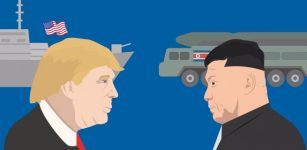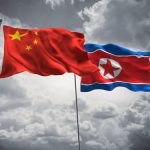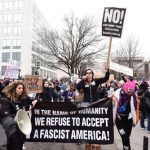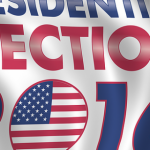Is Trump Tweeting Us Into War with North Korea?

It seems that in the age of Trump, tweeting threats of war has become part and parcel of US foreign diplomacy. On Friday, the US president wrote on the social media platform that “Military solutions are now in place, locked and loaded, should North Korea act unwisely.”
The 140 characters of a tweet are all Trump really needs to make his point to the Korean Peninsula nation that reportedly now has the ability to produce miniaturised nuclear warheads.
The president even found space in the message to suggest North Korean supreme leader Kim Jong-un “find another path.”
The tweet followed a week of intense political posturing between the two nations.
Long-range missiles
On August 5, the UN Security Council voted unanimously to impose new sanctions on North Korea, which would cut about a third of the impoverished nation’s export revenue.
Trump took to Twitter to express his adulation. He pointed out that the economic sanctions were the largest ever to have been placed on North Korea and wrote that he was “happy and impressed with the outcome.”
China’s foreign minister Wang Yi explained the sanctions were designed to block “North Korea’s nuclear missile development.” The move came a week after Pyongyang carried out its second intercontinental ballistic missile test in July.
According to David Wright, a weapons expert at the Union of Concerned Scientists, the missile tested on July 28 had the potential to hit major US cities, including Los Angeles, Chicago and New York.
Them’s fighting words
Unsurprisingly, Pyongyang didn’t appreciate the sanctions. The North Korean nation vowed it would deliver a “thousand-fold revenge” against the United States. The government’s statement also warned it wouldn’t negotiate over its nuclear program, while the US continued its hostile tactics.
“There is no bigger mistake than the United States believing that its land is safe across the ocean,” the Korean Central news agency said on August 7.
A Japanese government defence white paper released the next day warned that Pyongyang’s nuclear weapons program had reached a “new stage,” as it was possible the nation now has the capacity to produce miniature nuclear weapons. These could potentially be used in conjunction with missiles.
The Washington Post confirmed that analysis by the US Defence Intelligence Agency came to the same conclusion. It found that North Korea was on the path to becoming a fully-fledged nuclear power.
In response to Pyongyang’s words, Donald Trump took to his golf course in Bedminster, New Jersey, on August 8, warning in bellicose rhetoric that there would be devastating consequences if the north Asian nation continued on.
“They will be met with fire and fury and frankly power, the likes of which this world has never seen before,” the US president told reporters.
Stoking the fire
Pyongyang responded hours later by revealing it was considering launching a missile strike on the US territory of Guam in the Pacific region.
On the following day, General Kim Rak Gyom, the head of North Korean forces, released a statement saying it was not possible to have a “sound dialogue” with Trump, as he is “a guy bereft of reason.”
The general further warned the attack on Guam would consist of four missiles launched across the country of Japan in the direction of the small island, which would land 30 to 40 kilometres off the coast. He foreshadowed the plan would be finalised by mid-August.
Situated in the western Pacific Ocean, Guam is a remote island with almost a third of its landmass being used by the US as a strategic military position, consisting of a naval base and the Andersen airbase. Around 12,000 US military personnel and their dependents are stationed there.
The airbase has six B-1B bombers that have reportedly made 11 practice sorties since May in readiness for a potential strike on North Korea.
Around 170,000 US citizens live on the island of Guam. The local Chamorro people account for 40 percent of the population.
And it didn’t stop
Continuing on with the brinkmanship, Trump appeared again at his golf club, where he was having a working holiday, and said that his “fire and fury” stance “wasn’t tough enough,” and North Korea “had been doing this” to the United States “for many years.”
When asked whether his administration was considering a preemptive strike, the president said, “We don’t talk about that. I never do.” But he did add that if Beijing placed pressure on Pyongyang, then he might consider being more lenient on his view of China’s trade policies.
In an editorial, the state-owned Chinese daily newspaper the Global Times warned on Friday that Beijing would not support North Korea if the nation launched a strike on US soil, and Washington retaliated. However, China would intervene if the United States made a strike at its neighbour first.
“It is hoped that both Washington and Pyongyang can exercise restraint,” the editorial continued. It said that neither the US nor North Korea really wants war, but this “reckless game” could lead to a strategic battle that neither side has the experience of bringing to a halt.
The thunder from down under
Australian prime minister Malcolm Turnbull told 3AW last Friday that if North Korea makes a strike, then Australia would come to the aid of the United States. Turnbull said that under these circumstances the ANZUS treaty would be invoked.
This treaty is a security agreement signed by the nations of Australia, New Zealand and the United States back in 1951. It’s the second time the treaty has been invoked over recent years, as John Howard did so in the wake of the 9/11 attacks in New York.
On the brink?
South Korean news agency Yonhap reported on Sunday, that North Korea has called back its top envoys from China, the UN and Russia for a diplomat’s meeting. The agency speculated the meeting could be linked to the “country’s purported preparations for further military provocations.”
While some commentators have likened the US-North Korean standoff to the 1962 Cuban missile crisis, others have put it down to the flexing of muscles that happens at this time of year, when the US and South Korea carry out their joint military exercises.
But many around the globe are looking on in disbelief as Donald Trump continues the early days of his term in office, making military threats on Twitter, while relaxing at his golf course, in a position of power that was once taken seriously.








